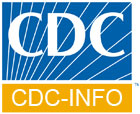Skip directly to the search box, site navigation, or content.
Division of Foodborne, Bacterial and Mycotic Diseases (DFBMD)
Shigellosis
Surveillance
CDC currently has six surveillance systems for obtaining information about Shigella. They serve different purposes and provide information on various features of the organism's epidemiology, such as number of outbreaks, antimicrobial-resistant infections, or subtypes.
Public Health Laboratory Information System (PHLIS)
PHLIS is a passive, laboratory-based surveillance system that collects data about many infections, including Shigella. Reporting is limited to illnesses that are confirmed by culture and verified at the state public health laboratory. After verification, information about the infection is reported electronically to CDC by the state.
Annual summaries of the PHLIS Shigella surveillance data.National Electronic Telecommunications System for Surveillance (NETSS)
NETSS is a passive, physician-based surveillance system that captures both laboratory-confirmed and clinically suspected cases of all nationally notifiable diseases, including Shigella. The number of illnesses reported through NETSS tends to be higher than the number reported through PHLIS because NETSS does not require confirmation by the state public health laboratory.
Shigella infections and other surveillance data collected by NETSS is published weekly in the CDC Morbidity and Mortality Report (MMWR).
The MMWR also publishes an annual summary of the NETSS Shigella surveillance data.FoodNet
The Foodborne Diseases Active Surveillance Network (FoodNet) is an active surveillance system for identifying and characterizing culture-confirmed infections that may be foodborne, including Shigella. FoodNet workers regularly contact more than 300 laboratories for confirmed cases of foodborne infections in 10 states encompassing a population of more than 44 million persons. In addition to monitoring the number of Shigella infections, investigators monitor laboratory techniques for isolation of bacteria, perform studies of ill persons to determine exposures associated with illness, and administer questionnaires to people living in FoodNet sites to better understand trends in the eating habits of Americans.Find annual FoodNet reports that include data about Shigella here.
National Molecular Subtyping Network for Foodborne Diseases Surveillance (PulseNet)
PulseNet is a national network of public health laboratories that perform pulsed-field gel electrophoresis (PFGE), a type of DNA "fingerprinting", on certain foodborne bacteria, including Shigella. PFGE "fingerprint" patterns are submitted electronically to CDC and can be compared rapidly with others in a large database. This system can help determine if individual infections are related or if an outbreak is occurring.
National Antimicrobial Resistance Monitoring System (NARMS)
NARMS is a passive surveillance system that monitors antimicrobial resistance of Shigella and selected other bacteria that cause human illness. NARMS is a collaboration among CDC, all state and local health departments, the Food and Drug Administration (FDA), and the United States Agricultural Department (USDA).Foodborne Outbreak Response and Survellance Team
CDC monitors outbreaks of foodborne disease, including outbreaks caused by Shigella. Each year, state and territorial epidemiologists voluntarily report the results of outbreak investigations to CDC. While outbreaks account for a small percentage of the total number of illnesses that occur each year, these investigations provide valuable information about sources of foodborne infection and often highlight important prevention opportunities.
MMWR Articles
Outbreak of Gastroenteritis Associated with an Interactive Water Fountain at a Beachside Park - Florida, 1999. MMWR June 30, 2000 / 49(25);565-8
Outbreaks of multidrug-resistant Shigella sonnei gastroenteritis associated with day care centers---Kansas, Kentucky, and Missouri, 2005. MMWR 2006 / 55:1068--71.
Outbreaks of Shigella sonnei infection associated with eating fresh parsley - United States and Canada, July - August 1998. MMWR April 16, 1999 / 48(14);285-9
Shigella flexneri Serotype 3 Infections Among Men Who Have Sex with Men --- Chicago, Illinois, 2003—2004. MMWR August 26, 2005 / 54 (33): 820 – 22.
Links
Laboratory Methods for the Diagnosis of Epidemic Dysentery and Cholera
References
Gupta A, Polyak CS, Bishop RD, Sobel J, Mintz ED. Laboratory-confirmed shigellosis in the United States, 1989--2002: epidemiologic trends and patterns. Clin Infect Dis 2004;38:1372--7.
Jain SK, Gupta A, Glanz B, Dick J, Siberry GK. Antimicrobial-resistant Shigella sonnei: limited antimicrobial treatment options for children and challenges of interpreting in vitro azithromycin susceptibility. Pediatr Infect Dis J. 2005;24:494–7.
Shane A, Crump J, Tucker N, Painter J, Mintz E. Sharing Shigella: risk factors and costs of a multi-community outbreak of shigellosis. Archives Pediatrics and Adolescent Med 2003; 157 601-603.
Sobel J, Cameron DN, Ismail J, et al. A prolonged outbreak of Shigella sonnei infections in traditionally observant Jewish communities in North America caused by a molecularly distinct bacterial subtype. J Infect Dis 1998; 177: 1405-1408.
Sivapalasingam S, Nelson JM, Joyce K, Hoekstra M, Angulo FJ, Mintz ED. A high prevalence of antimicrobial resistance among Shigella isolates in the United States, 1999--2002. Antimicrob Agents Chemother 2006;50:49--54.
* Links to non-Federal organizations found at this site are provided solely as a service to our users. These links do not constitute an endorsement of these organizations or their programs by CDC or the Federal Government, and none should be inferred. CDC is not responsible for the content of the individual organization Web pages found at these links.
Content Source: National Center for Zoonotic, Vector-Borne, and Enteric Diseases (ZVED)
Program Contents
Contact Information

